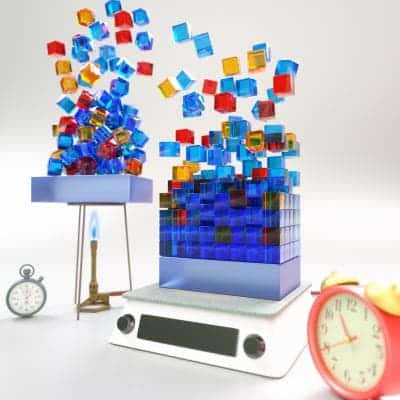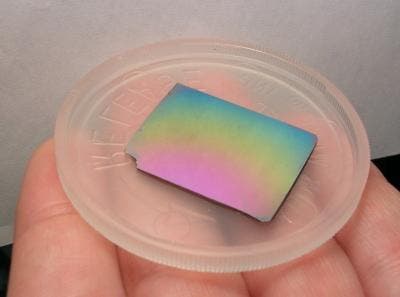
Aged glasses are materials that interest scientists very much due to their appealing properties. During thousands and even millions of years glass steadily evolves towards an ever stable molecular configuration. In manufacturing where the process needs to be cut short to weeks or days, similar properties are extremely difficult if not at times impossible to reproduce. Researchers at Chicago and Wisconsin-Madison have shown that using the vapor-deposition process they can produce a new class of materials similar to how glass ages and evolves in nature.
“In attempts to work with aged glasses, for example, people have examined amber,” said Juan de Pablo, UChicago’s Liew Family Professor in Molecular Theory and Simulations. “Amber is a glass that has been aged millions of years, but you cannot engineer that material. You get what you get.” de Pablo and Wisconsin co-authors Sadanand Singh and Mark Ediger report their findings in the latest issue of Nature Materials.
Ediger and colleagues has created glass for years now via vapor deposition in a vacuum chamber, a technique in which a metal sample is heated until vaporization, leading to glass formation on top of the containing surface through condensation. Several years ago, he discovered that glasses grown this way on a specially prepared surface that is kept within a certain temperature range exhibit far more stability than ordinary glasses.
Ultrastable glass analogous to tetris
Ediger claims that these conditions allows the molecules more room to arrange themselves in a more stable structure in a manner analogous to the most efficiently packed, multishaped objects in Tetris, each consisting of four squares in various configurations that rain from the top of the screen. To confirm his suppositions, Ediger enlisted Pablo and Singh to produce a computer simulation.
“There’s interest in making these materials on the computer because you have direct access to the structure, and you can therefore determine the relationship between the arrangement of the molecules and the physical properties that you measure,” said de Pablo, a former UW-Madison
“It had been believed until now that there is no correlation between the mechanical properties of a glass and the molecular structure; that somehow the properties of a glass are ‘hidden’ somewhere and that there are no obvious structural signatures,” de Pablo said.

The key to a more stable structure is to have the molecules arrange themselves as tightly and as neatly as possible, with a minimum amount of void between them – the key difference in the tetris analogy being that instead of actively arranging the various shapes to fit together, nature does all the work for us. Again, analogous to tetris, if your tetris pieces descend too quickly, you’ll be left with a chaotic structure and lose – or in our case end up with a less stable structure.
“In the experiment, if you either rain the molecules too fast or choose a low temperature at which there’s no mobility at the surface, then this trick doesn’t work,” Ediger said. “Then it would be like taking a bucket of odd-shaped pieces and just dumping them on the floor. There are all sorts of voids and gaps because the molecules didn’t have any opportunity to find a good way of packing.”
Ultrastable glass is sought after for applications like stronger metals and in faster-acting pharmaceuticals. The results have been described in a recently published paper in the journal Nature Materials.
source: U Chicago


